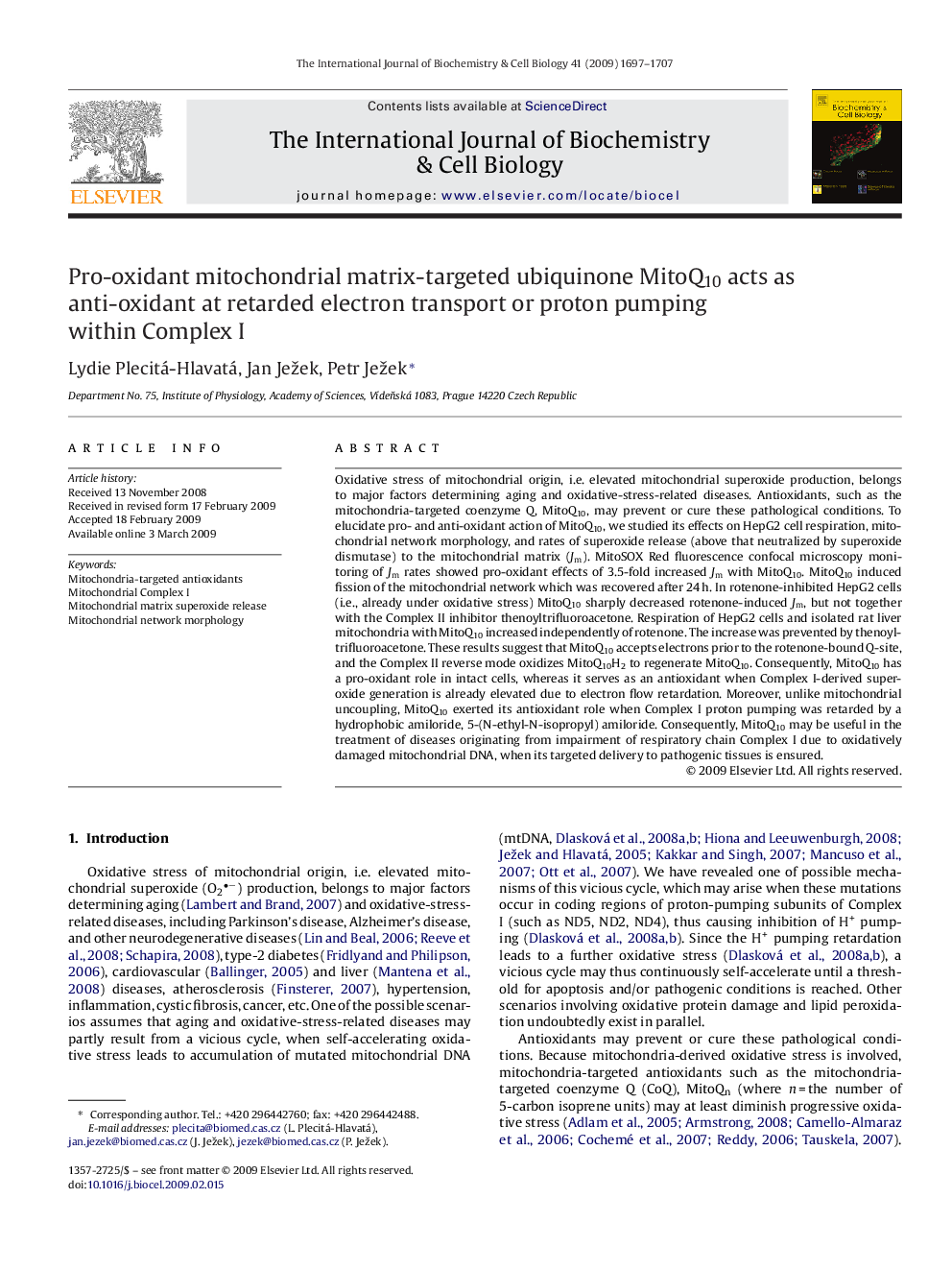| کد مقاله | کد نشریه | سال انتشار | مقاله انگلیسی | نسخه تمام متن |
|---|---|---|---|---|
| 1984178 | 1539950 | 2009 | 11 صفحه PDF | دانلود رایگان |

Oxidative stress of mitochondrial origin, i.e. elevated mitochondrial superoxide production, belongs to major factors determining aging and oxidative-stress-related diseases. Antioxidants, such as the mitochondria-targeted coenzyme Q, MitoQ10, may prevent or cure these pathological conditions. To elucidate pro- and anti-oxidant action of MitoQ10, we studied its effects on HepG2 cell respiration, mitochondrial network morphology, and rates of superoxide release (above that neutralized by superoxide dismutase) to the mitochondrial matrix (Jm). MitoSOX Red fluorescence confocal microscopy monitoring of Jm rates showed pro-oxidant effects of 3.5-fold increased Jm with MitoQ10. MitoQ10 induced fission of the mitochondrial network which was recovered after 24 h. In rotenone-inhibited HepG2 cells (i.e., already under oxidative stress) MitoQ10 sharply decreased rotenone-induced Jm, but not together with the Complex II inhibitor thenoyltrifluoroacetone. Respiration of HepG2 cells and isolated rat liver mitochondria with MitoQ10 increased independently of rotenone. The increase was prevented by thenoyltrifluoroacetone. These results suggest that MitoQ10 accepts electrons prior to the rotenone-bound Q-site, and the Complex II reverse mode oxidizes MitoQ10H2 to regenerate MitoQ10. Consequently, MitoQ10 has a pro-oxidant role in intact cells, whereas it serves as an antioxidant when Complex I-derived superoxide generation is already elevated due to electron flow retardation. Moreover, unlike mitochondrial uncoupling, MitoQ10 exerted its antioxidant role when Complex I proton pumping was retarded by a hydrophobic amiloride, 5-(N-ethyl-N-isopropyl) amiloride. Consequently, MitoQ10 may be useful in the treatment of diseases originating from impairment of respiratory chain Complex I due to oxidatively damaged mitochondrial DNA, when its targeted delivery to pathogenic tissues is ensured.
Journal: The International Journal of Biochemistry & Cell Biology - Volume 41, Issues 8–9, August–September 2009, Pages 1697–1707